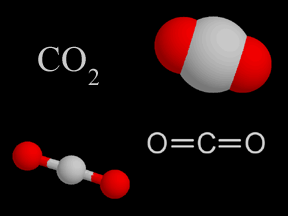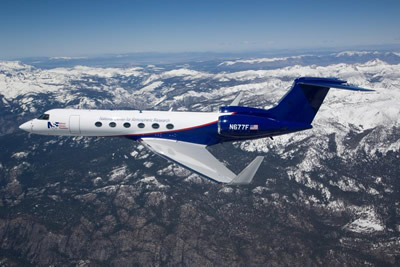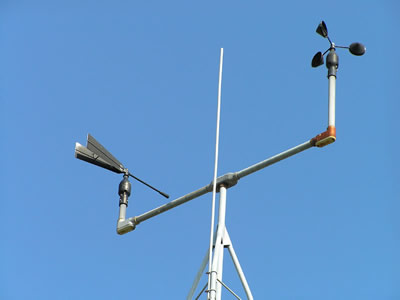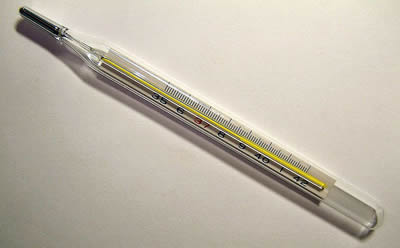Movie courtesy of the Little Shop of Physics.
Air Pressure and Wind
What makes the wind blow? In a word: pressure. All other things being equal, air will flow from high pressure to low, a principle that is nicely demonstrated with two partially-inflated exercise balls connected by a tube containing tiny balls that show the flow of air. When Samantha or Cierra push on one side, they increase the pressure, so the air flows from the ball with higher pressure to the ball with lower pressure.
You can make higher pressure by applying a force, but you can also make higher pressure by collecting a gas with higher density. The mass of this denser air will be a bit heavier than the surrounding air, and so will have a higher pressure at the bottom. Where do you get a denser gas? Dry ice - frozen carbon dioxide. A jug, which has had its base removed, is set on the table and the dry ice goes inside. Several candles are set around the base. As the dry ice warms, the container fills up with carbon dioxide gas. When the jug is lifted, the higher pressure at the bottom of the jug pushes the carbon dioxide over the flames—with rapid and dramatic results!
Right-click (Windows) or Option-click (Mac) here to download a copy of this video in QuickTime format.
Click here to learn more about the Little Shop of Physics.
You might also be interested in:

Wind is moving air. Warm air rises, and cool air comes in to take its place. This movement creates different pressures in the atmosphere which creates the winds around the globe. Since the Earth spins,
...more
Carbon dioxide is a colorless and non-flammable gas at normal temperature and pressure. Although much less abundant than nitrogen and oxygen in Earth's atmosphere, carbon dioxide is an important constituent
...more
Rainbows appear in the sky when there is bright sunlight and rain. Sunlight is known as visible or white light and is actually a mixture of colors. Rainbows result from the refraction and reflection of
...more
The Earth travels around the sun one full time per year. During this year, the seasons change depending on the amount of sunlight reaching the surface and the Earth's tilt as it revolves around the sun.
...more
Scientists sometimes travel in specially outfitted airplanes in order to gather data about atmospheric conditions. These research aircraft have special inlet ports that bring air from the outside into
...more
An anemometer is a weather instrument used to measure the wind (it can also be called a wind gauge). Anemometers can measure wind speed, wind direction, and other information like the largest gust of wind
...more
Thermometers measure temperature. "Thermo" means heat and "meter" means to measure. You can use a thermometer to measure the temperature of many things, including the temperature of
...more














